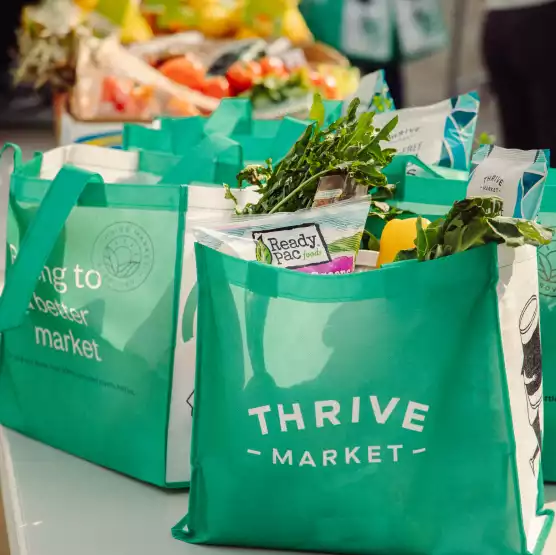If you’d asked me when I was six which part of food I cared most about, I would’ve said: the neon red frosting. It never occurred to me that what made that frosting glow in the dark might one day make me question the whole snack aisle. But now, as I read more, talk to experts, and sample more beet-based dye alternatives (yes, I’ve tried them all), it’s become obvious that eliminating artificial food dyes isn’t just about pastel cupcakes. It could mean a fundamental shift in how we grow food, process it, regulate it, and eat it.
What Are We Talking About?
Artificial food dyes are synthetic color additives—things like Red 40, Yellow 5, Blue 1—that give foods and beverages those bright, eye-catching colors. They’re cheap, stable in many food-processing conditions, and they sure make things look fun. But “fun” might be hiding costs we don’t always pay immediately.
The Health Signals: What the Research Says
Here’s where things get serious (and mildly terrifying if you’re a parent of an energetic kid):
-
A 2021 California report (from OEHHA, UC Berkeley, UC Davis) found that synthetic food dyes can cause hyperactivity and other neurobehavioral effects in some children. The report noted that children’s exposures often exceed what older “safe levels” (ADIs = Acceptable Daily Intakes) assume.¹ UC Berkeley Public Health+1
-
A recent review (2022) of clinical trials (double‐blinded, crossover designs) found that in about 64% of the studies, there was some positive association between dye exposure and behavioral effects; in 52% the effect was statistically significant.² PMC
-
In the infamous McCann et al. (2007) study, mixtures of artificial colors and sodium benzoate preservatives increased hyperactive behaviors in 3-year-old and 8-/9-year-old children.³ The Lancet
So yes: not every child, not every time, but enough evidence to cause concern. And especially concerning because many of the existing “safe levels” were based on studies from decades ago—studies that weren’t designed to pick up on things like attention span, irritability, subtle learning shifts.⁴ PMC+2OEHHA+2
The Farm Side: Growing the Alternatives
If we start removing synthetic dyes, nature has some surprising color artists ready:
-
Plants like beets, turmeric, spirulina, purple sweet potato, even red cabbage produce intense, usable pigments.
-
But there are trade-offs: natural dyes may fade faster, or behave differently under heat/light/pH shifts (think: that bright beet juice might turn brown-ish when baked or exposed to acid).
Farmers could benefit: a shift toward dye crops might open new markets for turmeric growers, beet farmers, or small operations growing algae. If demand rises, so might varieties bred for more stable pigmentation, easier extraction, or less environmental impact.
$60 in FREE groceries when you join Thrive Market
What This Could Mean Throughout the Food System
Here’s where the ripple effects come:
| Stakeholder | Possible Effects of Eliminating Artificial Dyes |
|---|---|
| Food manufacturers | Reformulation costs; need for R&D; possibly higher ingredient costs. But also the marketing upside: “clean label,” “naturally colored.” |
| Regulators / Policy | Reassessment of Acceptable Daily Intakes (ADIs); stronger labeling requirements; possibly bans or phased-removals. Already some moves: FDA in 2025 has proposed phasing out several synthetic dyes.⁵ Reuters+1 |
| Consumers / Public Health | Reduced exposure might lessen behavioral issues in susceptible children; potential drops in allergies or sensitivities; more trust in ingredient transparency. |
| Agriculture & Supply Chains | New demand for pigment crops; pressure to make extraction sustainable; possible shifts in commodity markets. |
The “Table” Part: How Our Plates Might Change (and Why That’s Okay)
I usually like my food to look exactly like it does in advertisements. But maybe it’s time to adjust expectations:
-
Yogurts might be paler shades, not screaming cherry red.
-
Frostings, candies, drinks—less brilliance, more nuance.
-
Labels that say “naturally colored” or “no artificial colors”—you’ll start seeing them more (and they’ll count as a win).
It might feel odd at first (I remember my disappointment when my pink lemonade looked more “salmon” than “barbie-pink”), but our taste and expectations adapt. And maybe that adaptation is a good thing.
GEHE Glass Salad Bowl with Lid, 10.6Inch Large Trifle Bowl Glass Fruit Bowl, 4.7 Quart Large Capacity Serving Bowls for Salad, Pasta, Fruit, Dessert Display Cake, Microwave Safe
Some Numbers That Jumped Out at Me
-
The rate of ADHD diagnoses in U.S. children rose from about 6.1% to 10.2% over ~20 years.⁶ OEHHA+1
-
In a sampling of foods aimed at kids—candies, snacks, drink mixes—~90% contained synthetic dyes.⁷ CSPI
-
In the challenge studies I mentioned, more than half showed statistically significant effects of dye exposure on behavior. (52%) PMC
What I Think Needs to Happen (Because Wanting Less Neon Isn’t Enough)
-
Update Regulatory Standards
The Acceptable Daily Intakes need re-evaluation using modern studies that capture behavioral outcomes. -
Support for Natural Pigment Research
Funding for better natural dyes—stable, safe, cost-effective—is crucial. -
Transparent Labeling & Consumer Choice
Labels that clearly say “contains artificial colors / synthetic dyes” so people can opt-in or opt-out. -
Industry Commitments
Some companies are already pledging to phase out synthetic dyes (e.g. cereals, snacks). More need to follow. -
Educating at the Farm Level
Farmers, especially smaller ones, may need support if the market shifts toward pigment crops—training, seed access, processing help.
With 3 Milling Discs, Ergonomic design Rotary hand crank Food Mills For Tomato Sauce, Potatoes, Jams, canning, Dishwasher Safe, Includes Multifunctional Spoon, Blue
Bottom Line
Eliminating artificial food dyes isn’t just about frosting or eye appeal. It’s about aligning more of our food system with health, transparency, and environmental sense. It means changes on the farm, in factories, in regulations—and in how we think about “pretty food.”
I don’t expect every jelly bean to lose its pop overnight. But I do believe that a world where bright colors come from nature, not a chemistry lab, is one worth working toward. And hey, maybe I’ll enjoy the more subtle shade of my pink lemonade more than I thought.
Ready to Take the Next Step?
Footnotes & References
-
California OEHHA/UC Berkeley/UC Davis report, April 2021: Potential Neurobehavioral Effects of Synthetic Food Dyes in Children. “Evidence shows synthetic food dyes are associated with adverse neurobehavioral outcomes…” UC Berkeley Public Health+1
-
Miller MD et al., 2022 review of clinical trials and animal toxicology—~64% of trials saw some positive association, ~52% statistically significant. PMC
-
McCann D., Barrett A., Cooper A., et al. (2007). Food additives and hyperactive behaviour in 3-year-old and 8/9-year-old children in the community. The Lancet. The Lancet
-
Discussions in OEHHA and other reviews note that older studies forming ADI basis didn’t assess behavioral/neurodevelopmental outcomes to the degree needed. UC Berkeley Public Health+2OEHHA+2
-
U.S. FDA and Health Secretary’s 2025 announcement to phase-out many synthetic dyes by end of 2026, and other dye regulation shifts. Reuters+1
-
ADHD diagnosis rates in kids rose from ~6.1% to ~10.2% over ~20 years (source: California report) OEHHA+1
-
Center for Science in the Public Interest fact sheet: ~90% of child-oriented candies, snack items, etc., in sampled stores contained synthetic dyes. CSPI








